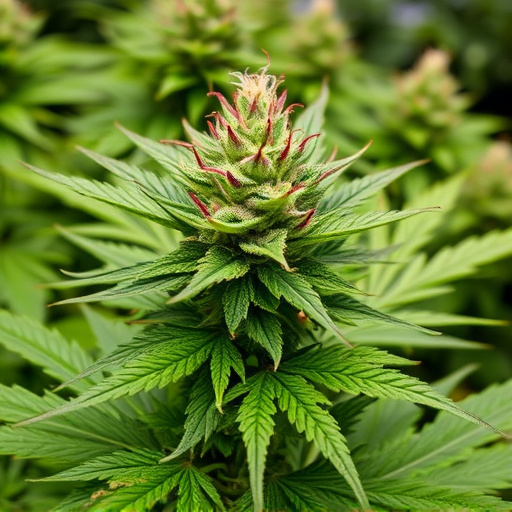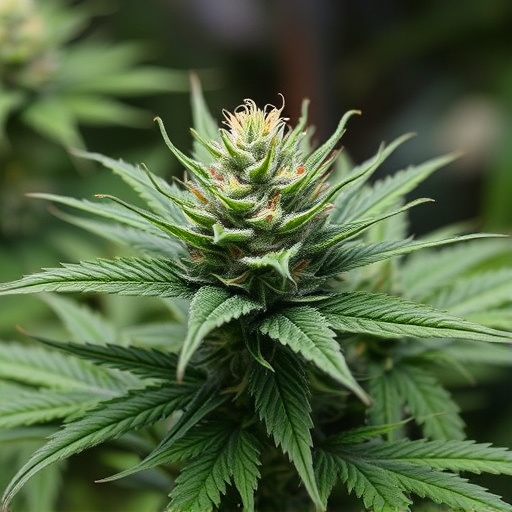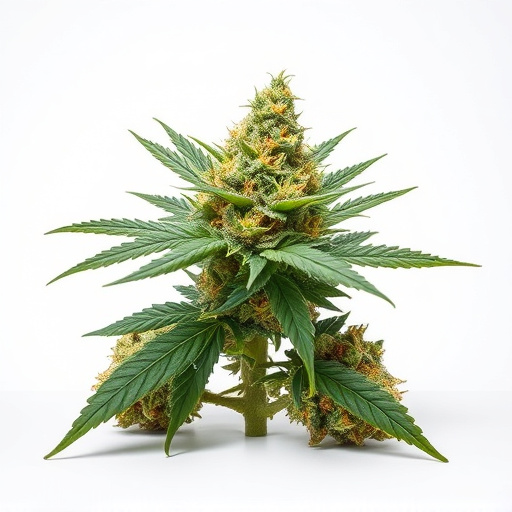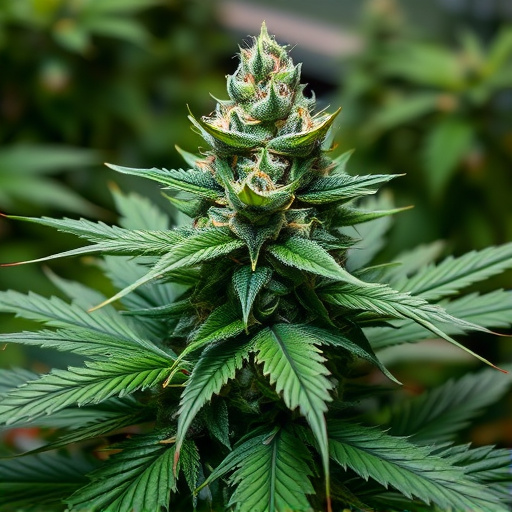Cannabis sativa strains have varying effects based on individual factors like tolerance and consumption method, offering short-term benefits such as heightened senses and relaxation due to THC's impact on brain receptors. However, long-term use carries significant health risks, including cognitive impairments, respiratory difficulties, and mental health issues, especially with high-potency strains. Responsible consumption, understanding personal limits, and genetic predispositions are crucial for mitigating these risks associated with cannabis sativa strains.
“Uncovering the multifaceted impact of cannabis sativa strains, this article delves into the intricate web of their short- and long-term effects. While many celebrate the therapeutic benefits of these plants, it’s crucial to navigate the potential risks associated with long-term use. From cognitive impacts to mental health considerations, understanding both sides is essential. We explore how balancing the benefits and dangers of cannabis sativa can foster a more informed approach to its consumption.”
- Short-Term Effects of Cannabis Sativa Strains
- Long-Term Use and Potential Risks of Weed
- Balancing the Benefits and Dangers: Understanding Cannabis Sativa's Impact
Short-Term Effects of Cannabis Sativa Strains

The short-term effects of cannabis sativa strains can vary greatly among individuals based on factors like tolerance, frequency of use, and method of consumption. Typically, users may experience heightened senses, increased creativity, and relaxation. This is often attributed to the immediate impact of THC (tetrahydrocannabinol), the primary psychoactive compound in cannabis, which binds to receptors in the brain, altering mood and perception. Physical effects can include heightened appetite, dry mouth, and red, puffy eyes—commonly known as the “munchies” and “red eyes.” Some users may also experience temporary disorientation or difficulty concentrating, especially with higher THC concentrations.
While these short-term effects might be enjoyable for some, it’s crucial to understand that frequent or heavy use can lead to more intense and prolonged adverse reactions. This is particularly true for younger individuals whose brains are still developing. Short-term memory issues, anxiety, and paranoia have been reported by users, especially when consuming high-potency cannabis sativa strains. These experiences underscore the importance of mindful consumption and understanding one’s personal limits.
Long-Term Use and Potential Risks of Weed

Long-term use of cannabis, often referred to as “weed,” can lead to a range of potential risks and health implications. While occasional use may be relatively safe, regular and heavy consumption over extended periods has been linked to various adverse effects. One significant concern is the impact on mental health, with studies suggesting an increased risk of psychosis and schizophrenia in individuals who start using cannabis at a young age or frequently consume high-potency cannabis sativa strains. These risks are particularly heightened when cannabis is used in conjunction with other substances.
Additionally, long-term users may experience cognitive impairments, including difficulties with memory, attention, and problem-solving abilities. This is attributed to the effects of THC (tetrahydrocannabinol), the primary psychoactive compound in cannabis, on the brain’s development and function. Other potential long-term health issues include respiratory problems due to smoking, increased risk of heart disease, and potential damage to liver enzymes. It’s important to consider that these risks can be influenced by factors such as frequency of use, strain potency, and individual genetic predispositions.
Balancing the Benefits and Dangers: Understanding Cannabis Sativa's Impact

Cannabis Sativa strains have been revered for their potential therapeutic benefits, offering a range of short-term effects that can include relaxation, pain relief, and heightened sensory perception. These immediate advantages have sparked interest in both medical and recreational circles. However, balancing these perceived benefits against the potential dangers is paramount. Long-term use of Cannabis Sativa may lead to issues such as cognitive impairment, respiratory problems, and mental health concerns, particularly with regular, high-potency consumption. The complex interplay between strain potency, individual biochemistry, and frequency of use underscores the need for cautious consideration. Understanding these dynamics is crucial in navigating the spectrum of cannabis sativa strains’ impacts, ensuring a responsible approach to its utilization.
In understanding the effects of cannabis sativa strains, both in the short and long term, it’s clear that balancing their benefits and dangers is a complex task. While research highlights potential therapeutic advantages, prolonged use may lead to various health risks. Further studies are essential to unravel the nuances of different cannabis sativa strain impacts, ensuring informed decisions regarding their consumption. By staying aware of these effects, individuals can make responsible choices, leveraging the benefits while mitigating potential long-term risks associated with regular use.














